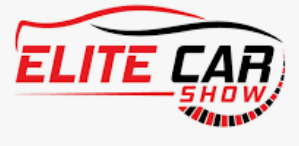Selecting the right brake line is a pivotal decision for your vehicle’s brake system, ensuring peak performance and safety. Two prevalent options—3/16 brake lines and Copper Nickel brake lines—hold distinct merits. Understanding their attributes, advantages, and nuances is key in determining the ideal fit for your vehicle.
The 3/16 brake line, crafted from steel, stands as a popular choice owing to its affordability and widespread availability. Its robust build withstands moderate pressure and heat admirably. However, it might not be the most prudent selection for regions prone to high corrosion risk, like coastal areas or locales where road salt is prevalent during winter.
Contrarily, the Copper Nickel brake line emerges with superior corrosion resistance, rendering it an exceptional pick for vehicles operating in harsh environments. Also, its increased flexibility compared to steel simplifies installation in cramped spaces and around bends.
When weighing between the 3/16 brake line and Copper Nickel brake line, consider your specific requirements and budget. While the 3/16 brake line might offer a more economical option, the Copper Nickel variant’s superior corrosion resistance could potentially save expenses in the long run by prolonging the brake system’s lifespan.
Top-Notch Brake Line Fittings and Fuel Line Tubing
Beyond brake lines, top-quality brake line fittings and fuel line tubing are crucial constituents that significantly enhance the safety and performance of your brake system. This segment delves into the critical role of these components and their significance.
Brake Line Fittings
These connectors link your brake lines to various system components brake calipers, master cylinders, and brake hoses. Ensuring their strength and reliability is imperative for your brake system’s optimal functionality. Inferior or damaged fittings might lead to leaks, reduced brake pressure, and compromised system performance.
Upgrading brake line fittings necessitates consideration of the fitting type, material, and compatibility with your brake line. Common fitting types encompass:
- Compression fittings: They attach to your brake line by compressing it onto the fitting and are widely used, pairing well with most brake lines.
- Flare fittings: These connectors join your brake line by flaring the tubing’s end and attaching it to the fitting. They are perceived as more reliable but require specialized tools for flaring.
- Inverted flare fittings: Similar to flare fittings but with a smaller thread, often employed in older vehicles.
Material selection for brake line fittings holds significance. While steel and brass are common, stainless steel excels in heightened corrosion resistance. Ensure the fittings align with your brake line’s type and diameter for secure connections.
Fuel Line Tubing
Fuel line tubing serves as a critical component, linking your fuel tank to the engine, ensuring precise fuel delivery. Subpar or damaged tubing can lead to leaks, reduced fuel pressure, and compromise your vehicle’s performance.
Choosing fuel line tubing involves considerations like fuel type compatibility, tubing diameter, and material. Common tubing materials comprise:
- Steel tubing: Renowned for durability and high-temperature resistance, making it a popular choice for fuel lines.
- Aluminum tubing: Lightweight and flexible but might require protective coatings against corrosion.
- Nylon tubing: Exhibits flexibility and corrosion resistance but might not suit high-temperature applications.
Ensure the selected fuel line tubing aligns with your fuel type and maintains an appropriate diameter for optimal fuel flow. Also, route the tubing safely, away from heat sources or moving parts that might cause damage.
Investing in top-quality brake line fittings and fuel line tubing is pivotal for optimal performance and safety.
Conclusion:
In Summary, when deciding between the 3/16 brake line and Copper Nickel brake line, your choice hinges on specific needs and budget considerations. The 3/16 brake line offers cost-effective availability, while the Copper Nickel variant boasts superior corrosion resistance. Regardless of your selection, prioritize top-quality brake line fittings and fuel line tubing as they substantially contribute to the brake system’s performance and safety. Employing substandard or worn-out fittings might lead to leaks and brake failures, posing a safety hazard.
FAQs
Which brake line type is preferable—3/16 or Copper Nickel?
The choice between a 3/16 brake line and Copper Nickel brake line relies on individual needs. While the 3/16 brake line is cost-effective and widely available, the Copper Nickel variant excels in corrosion resistance.
Why is it crucial to use high-quality brake line fittings?
Employing top-notch brake line fittings significantly bolsters the safety and performance of your brake system. These fittings ensure proper connections, preventing leaks and affording peace of mind while driving.
What significance does durable fuel line tubing hold?
Durable copper fuel line tubing is pivotal in ensuring precise fuel delivery and preventing leaks. It maintains your fuel system’s integrity, contributing to reliable engine performance.
